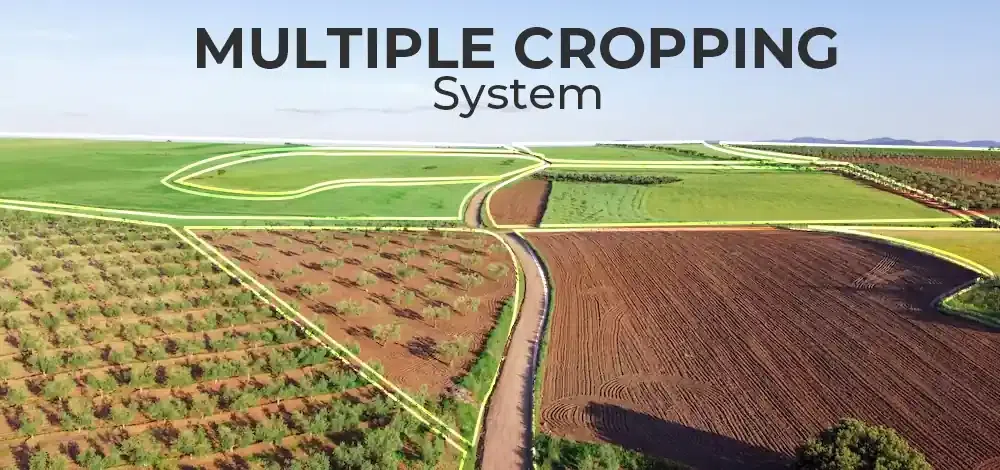Multicropping
★ Natural farming and Multicropping yield better results for small farmers (Who holds 1 hectare to 2 hectares of land) than resource intensive monocropping
What is Multicropping?
- Multicropping is the practice of growing multiple crops on the same land simultaneously, ensuring better resource utilization and sustainability.
Traditional vs. Modern Agriculture:
- Traditional agriculture was sustainable and self-sufficient, incorporating livestock and poultry into farming.
- Monocropping (introduced during British rule) led to market dependency and food insecurity (e.g., Indigo cultivation and the 1859 Nil Satyagraha).
Multi Cropping Benefits for Small Farmers:
- Ensures year-round income and food security.
- Helps retain soil moisture and reduce input costs.
- Supports biodiversity and agroecology principles.National Mission on Natural Farming (NMNF):
- Promotes traditional multicropping models like: Akkadi Saalu (Karnataka), Navadhanya (Andhra Pradesh), Payir (Tamil Nadu), Bara-Anaj (Northern Hills).
Natural Farming (NF):
A chemical-free, minimal-input farming method, emphasizing organic matter, local biodiversity, and reduced human intervention.
Agroecology:
- An integrated farming approach balancing ecology and economy, based on FAO’s 13 principles (e.g., soil health, biodiversity, fairness).
Success Stories:
- Farmers in Parvathipuram and Srikakulam districts (Andhra Pradesh)
practice natural farming with multi cropping, securing:
- ₹30,000 per acre annually
- Sustainable livelihoods through crops, livestock, poultry, and fisheries
- MGNREGA wages supplementing farm income.
Proposed NMNF Reforms:
- Landscape Approach for Farming
- Encourages farming based on regional agroecology rather than a uniform national model.
- Promotes biodiversity, soil conservation, and water-efficient practices.
- Community Participation:
- Strengthens Farmer Producer Organizations (FPOs) and cooperatives.
- Localized Crop Combinations:
- Supports region-specific crops that suit soil, climate, and water availability.
- Local Market Integration Before National Expansion:
- Develops village and district-level markets before expanding to a national level.
- Strengthens local food security and promotes farm-to-table models.
- Gradual Transition to Natural Farming:
- Prevents sudden economic distress among farmers.













